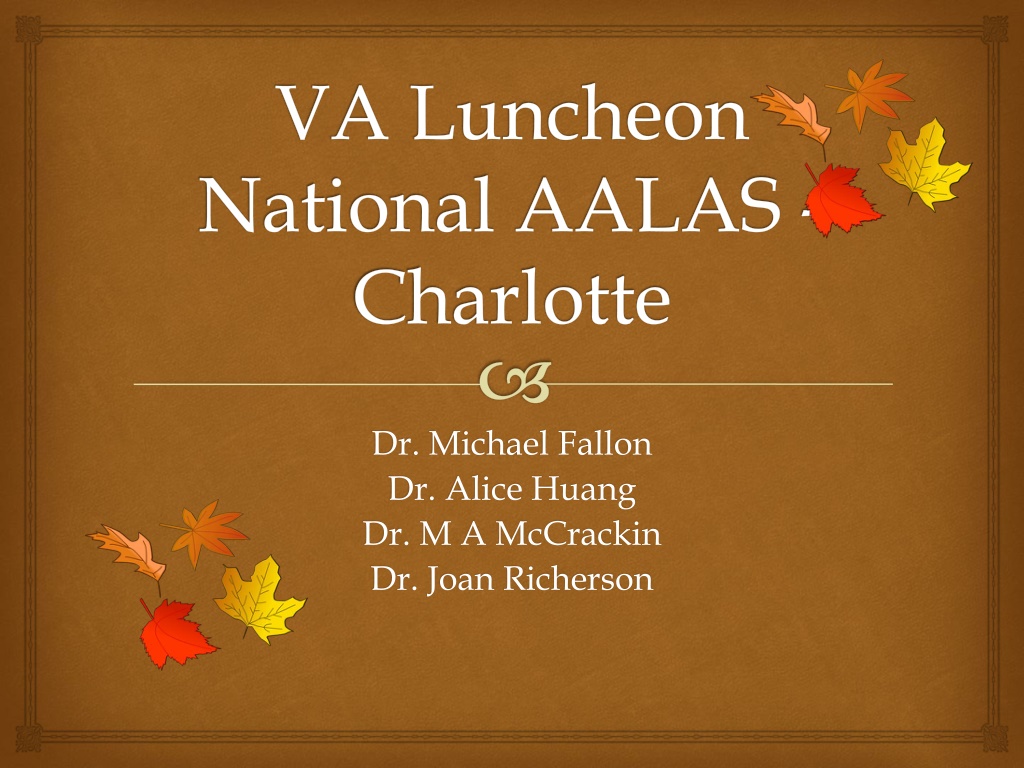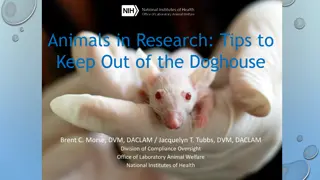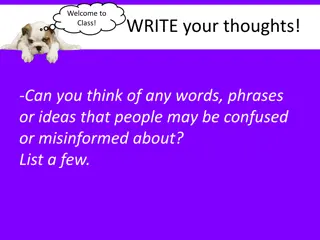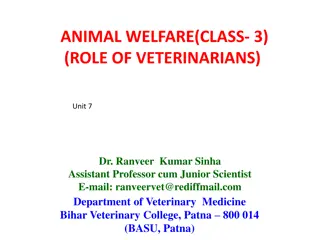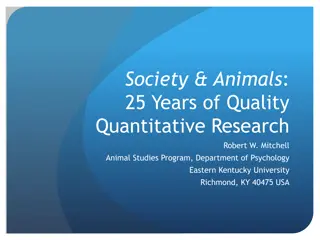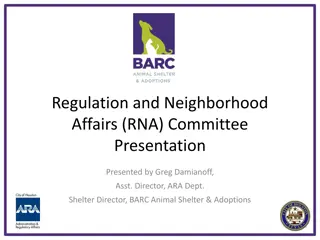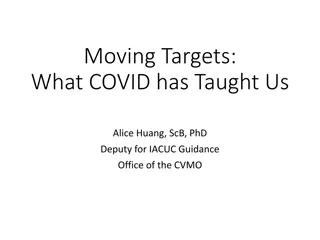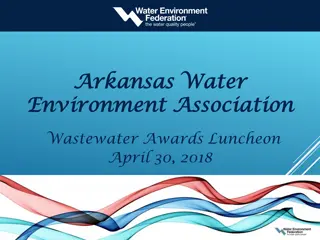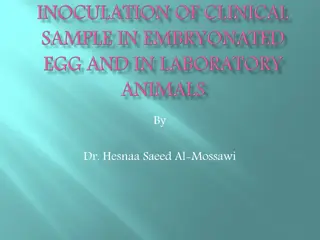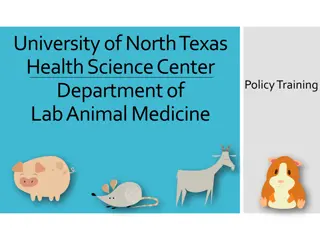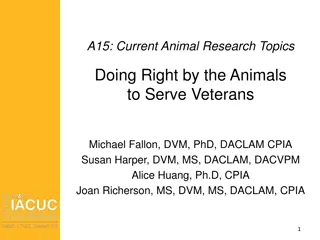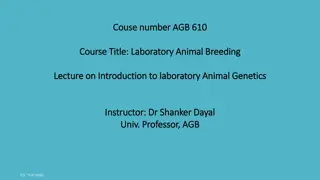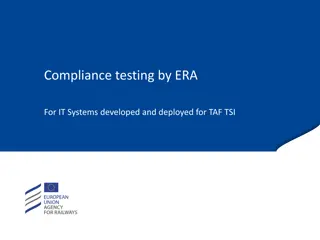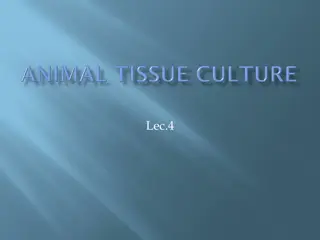Enhancing Animal Research Compliance: Insights from AALAS Luncheon
Explore updates and guidance from the AALAS luncheon and CVMO office, aiming to streamline animal research management with a focus on ethical and regulatory compliance. Learn about the semiannual evaluation process, importance of regulatory requirements, and strategies for effective IACUC operation.
Download Presentation

Please find below an Image/Link to download the presentation.
The content on the website is provided AS IS for your information and personal use only. It may not be sold, licensed, or shared on other websites without obtaining consent from the author. Download presentation by click this link. If you encounter any issues during the download, it is possible that the publisher has removed the file from their server.
E N D
Presentation Transcript
VA Luncheon National AALAS - Charlotte Dr. Michael Fallon Dr. Alice Huang Dr. M A McCrackin Dr. Joan Richerson
Office of CVMO Core Function To help the field manage research that involves animals, With minimal hassle and aggravation, while ensuring compliance with ethical and regulatory requirements
Guidance To enhance the effectiveness and efficiency of the IACUC in carrying out its responsibilities
CVMO Update Interaction with ORO Research Safety and Animal Welfare team- CVMO s office is working to make sure ORD and ORO are in agreement on animal research topics. AAALAC Contract- new contract covering accreditation costs of all VA animal research programs will be in place after first of year. No real changes. Handbook 1200.07, Use of Animals in Research : work has begun on new version- goal is less text, and more complete reliance on PHS Policy and USDA AWAR. A guidance document will contain more detailed information.
Semiannual Evaluation Process Alice Huang, PhD, CPIA Deputy, IACUC Guidance
Why Bother? Regulatory requirement
Why Bother? Regulatory requirement A useful tool for making sure that ethical requirements continue to be met as things change over time
Evaluation Teams 2 IACUC members Fresh eyes Non-member guests
Semiannual Report Forms Part 1 Checklists Section A what is intended Section B what is happening Part 2 Table of Deficiencies and Departures Part 3 Post-Review Documentation
Working Through the Checklists Checklist items are prompts Note anything that may be of concern Check on items that were incomplete on the last report Significant = in the judgment of the IACUC and the IO, is or may be a threat to the health or the safety of the animals (USDA) Minor = anything else Minor Unimportant
What to Do with Deficiencies Analyze root causes Decide on appropriate corrective actions Perfectly okay to correct in stages Immediate to address significant deficiency Short-term longer lasting Long-term to prevent recurrence
Documentation Part 1 and Part 2 to make follow up easy Part 3 puts findings into perspective Minority opinions any submitted have to be included Report is final when signed by majority of members Discuss with Director, Director s signature required
Semiannual Evaluation Process Specifics Joan T Richerson, DVM, CPIA Assistant CVMO
Why do it? . Because it is always better to find your own problems and correct them than to have an outside party find them for you! But sometimes IACUCs get off on the wrong path.
Missed opportunity Provide a summary overview of the programmatic and facility deficiencies : There are several minor deficiencies at the ______VMU. These deficiencies are scheduled to be corrected during the renovation of the VMU.
Whats wrong with this picture? No specific dates of correction. No specific plan of correction. Citing items that are not actual deficiencies (i.e. replace a galvanized piping with stainless steel). Summary of the programmatic and facilities deficiencies does not give a realistic overview of the state of the program and facilities.
Top 5 findings by Dr. MA McCrackin #5 No dates of completion for items requiring dates (e.g., regulatory annual reports, most recent overheat test, most recent SOP review) are left blank. #4 Incomplete list of IACUC members on the signature page incomplete or the role of a member varies within the report. Most serious is confusion about whether IACUC members are qualified to hold the roles of NSM and NAM.
Top 5 findings continued #3 Summary of the state of program and facilities provided to Director (IO) is missing or lacks detail. #2 Lingering deficiencies do not have clear completion dates or the deficiency resurfaces at later date without explaining if it was resolved the first time.
Top 5 findings continued Ambiguity in deficiency descriptions, corrective plan, and date of completion.
Remember! If a deficiency is cited make sure it really is a deficiency and clearly describe it. Corrective plan of action be specific! It s OK to have an interim corrective action while working toward a long time solution. Do not blindly make up proposed completion dates. Consult and involve other institutional departments in determining realistic timetables for date(s) of correction.
